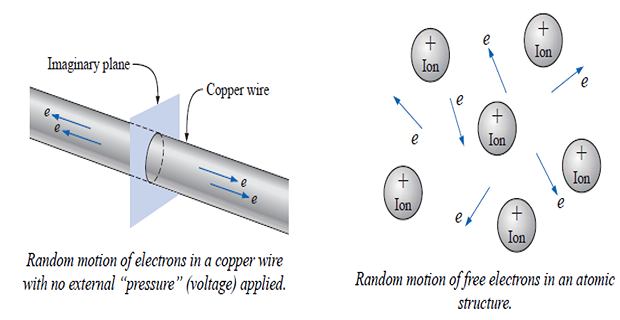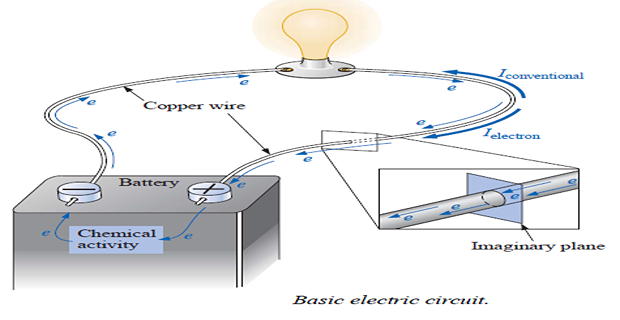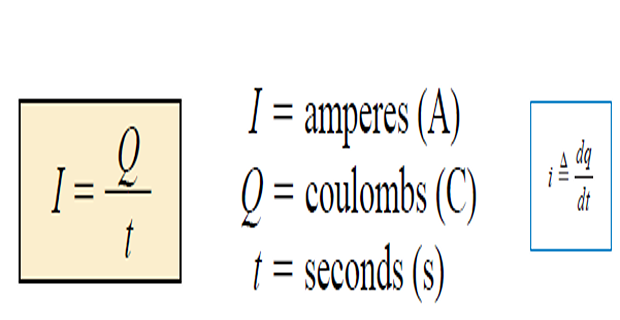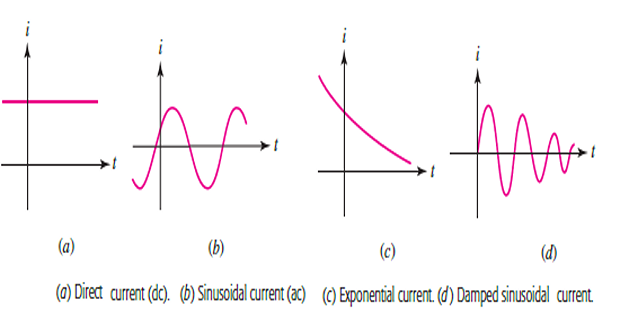Demonstrative Video
Concepts of Electric Charge & Current
Charge and Current
All matter is made of fundamental building blocks known as atoms and that each atom consists of electrons, protons, and neutrons.
Two types of charge: positive (proton) and negative (electron).
Proton & electron equal charge magnitude \(= \pm 1.602\times 10^{-19}\) C
The presence of equal numbers of protons and electrons leaves an atom neutrally charged.
Electric charge is the most basic quantity in an electric circuit
Electric circuits in which only electron flow is relevant.
Many devices (such as batteries, diodes, and transistors) in which positive charge motion is important to understanding internal operation, but external to the device we typically concentrate on the electrons which flow through the connecting wires
Neither create nor destroy electrons (or protons) when running in electric circuits \(\Rightarrow\) charge conservation
Charge in motion represents a current
Coulomb is a large unit for charges.
\(1 \mathrm{C}\) of charge have \(1 /\left(1.602 \times 10^{-19}\right)=6.24 \times 10^{18}\) electrons.
Thus realistic or laboratory values of charges are on the order of \(\mathrm{pC}, \mathrm{n} \mathrm{C}\), or \(\mu \mathrm{C}\)
A unique feature of electric charge or electricity is the fact that it is mobile; that is, it can be transferred from one place to another, where it can be converted to another form of energy.

At room temperature with no external forces applied, there exists within the copper wire the random motion of free electrons created by the thermal energy that the electrons gain from the surrounding medium.
When atoms lose their free electrons, they acquire a net positive charge and are referred to as positive ions.
The free electrons are able to move within these positive ions and leave the general area of the parent atom, while the positive ions only oscillate in a mean fixed position.
Free electrons find themselves continually gaining or losing energy by virtue of their changing direction and velocity.
Some of the factors responsible for this random motion include
the collisions with positive ions and other electrons,
the attractive forces for the positive ions, and
the force of repulsion that exists between electrons.
This random motion of free electrons is such that over a period of time, the number of electrons moving to the right across the circular cross section is exactly equal to the number passing over to the left.
The battery, at the expense of chemical energy, places a net +ve charge at one terminal and a net -ve charge on the other.
The instant the final connection is made, the free electrons (of -ve charge) will drift toward the +ve terminal, while the +ve ions left behind in the copper wire will simply oscillate in a mean fixed position.

The -ve terminal is a “supply” of electrons to be drawn from when the electrons of the copper wire drift toward the +ve terminal.
The chemical activity of the battery will absorb the electrons at the +ve terminal and will maintain a steady supply of electrons at the -ve terminal.
The flow of electrons through the bulb will heat the bulb filament through friction, it will glow red hot and emit the desired light
If \(6.242 \times 10^{18}\) electrons drift at uniform velocity through the imaginary circular cross section in 1 second, the flow of charge, or current, is said to be 1 ampere (A).
- \[\text { Charge/electron }=Q_{e}=\frac{1 \mathrm{C}}{6.242 \times 10^{18}}=1.6 \times 10^{-19} \mathrm{C}\]The charge associated with one electron:
- The current in amperes:

- The other two quantities:


Current need not be a constant-valued function, there can be several types of current; that is, charge can vary with time in several ways.
Direct Current (dc) remains constant with time.
Alternating Current (ac) varies sinusoidally with time.
As the movement of charge, we expect current to have an associated direction of flow.
Direction of current flow is conventionally taken as the direction of positive charge movement.

Based on this convention, a current of 5 A may be represented positively or negatively.
In other words, a negative current of -5A flowing in one direction is the same as a current of +5A flowing in the opposite direction.
Safety Considerations:
Although most individuals can withstand currents up to perhaps 10 mA for very short periods of time without serious side effects, any current over 10 mA should be considered dangerous
50 mA can cause severe shock, and over 100 mA can be fatal